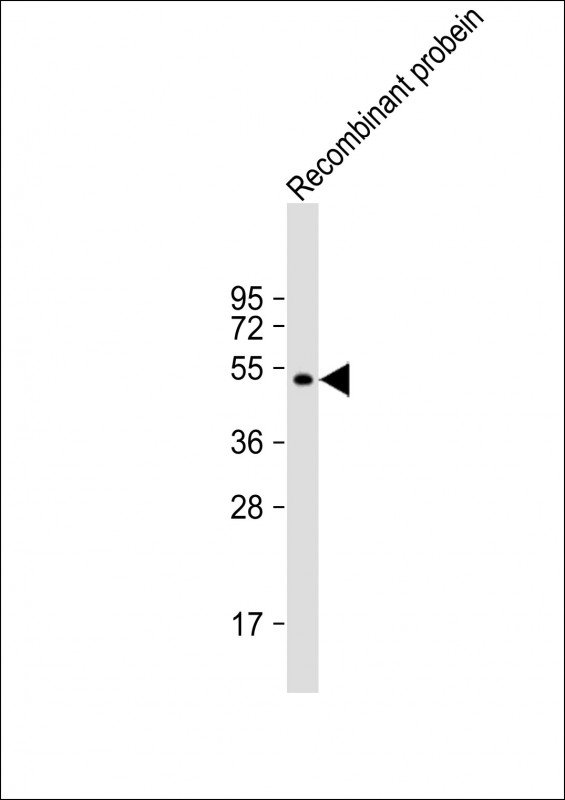
ICC/IF analysis of formalin-fixed HeLa cells using GTX54888 AKAP13 antibody. Red : Primary antibody Blue : DAPI Permeabilization : 0.1% Triton X-100 in TBS for 5-10 minutes
AKAP13 antibody
GTX54888
ApplicationsImmunoFluorescence, Western Blot, ImmunoCytoChemistry, ImmunoHistoChemistry, ImmunoHistoChemistry Paraffin
Product group Antibodies
ReactivityHuman
TargetAKAP13
Overview
- SupplierGeneTex
- Product NameAKAP13 antibody
- Delivery Days Customer9
- Application Supplier NoteWB: 1:500 - 1:1000. ICC/IF: 1:100 - 1:500. IHC-P: 1:100 - 1:200. *Optimal dilutions/concentrations should be determined by the researcher.Not tested in other applications.
- ApplicationsImmunoFluorescence, Western Blot, ImmunoCytoChemistry, ImmunoHistoChemistry, ImmunoHistoChemistry Paraffin
- CertificationResearch Use Only
- ClonalityPolyclonal
- ConjugateUnconjugated
- Gene ID11214
- Target nameAKAP13
- Target descriptionA-kinase anchoring protein 13
- Target synonymsAKAP-13, AKAP-Lbc, ARHGEF13, BRX, HA-3, Ht31, LBC, PRKA13, PROTO-LB, PROTO-LBC, c-lbc, p47, A-kinase anchor protein 13, A kinase (PRKA) anchor protein 13, LBC oncogene, breast cancer nuclear receptor-binding auxiliary protein, guanine nucleotide exchange factor Lbc, human thyroid-anchoring protein 31, lymphoid blast crisis oncogene, non-oncogenic Rho GTPase-specific GTP exchange factor, protein kinase A-anchoring protein 13
- HostRabbit
- IsotypeIgG
- Protein IDQ12802
- Protein NameA-kinase anchor protein 13
- Scientific DescriptionThe A-kinase anchor proteins (AKAPs) are a group of structurally diverse proteins which have the common function of binding to the regulatory subunit of protein kinase A (PKA) and confining the holoenzyme to discrete locations within the cell. This gene encodes a member of the AKAP family. Alternative splicing of this gene results in multiple transcript variants encoding different isoforms containing c-terminal dbl oncogene homology (DH) and pleckstrin homology (PH) domains. The DH domain is associated with guanine nucleotide exchange activation for the Rho/Rac family of small GTP binding proteins, resulting in the conversion of the inactive GTPase to the active form capable of transducing signals. The PH domain has multiple functions. Therefore, these isoforms function as scaffolding proteins to coordinate a Rho signaling pathway, function as protein kinase A-anchoring proteins and, in addition, enhance ligand-dependent activity of estrogen receptors alpha and beta. [provided by RefSeq, Jul 2012]
- ReactivityHuman
- Storage Instruction-20°C or -80°C,2°C to 8°C
- UNSPSC12352203








